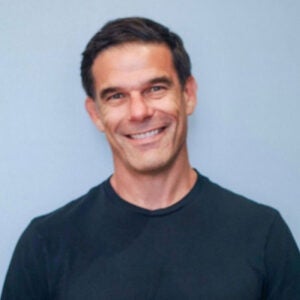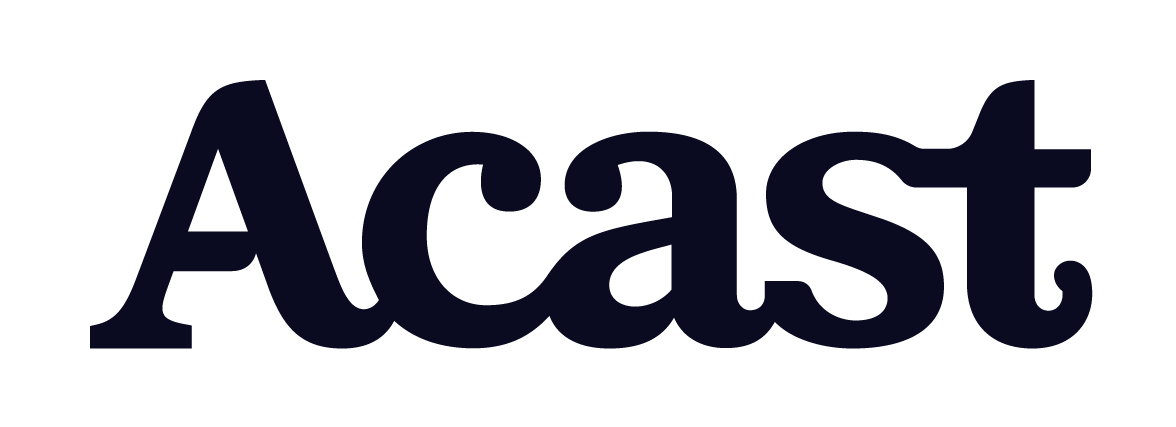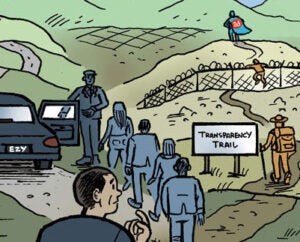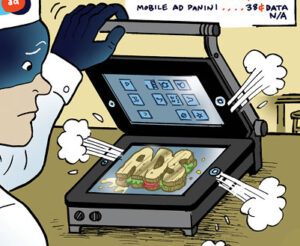Despite its steady growth, digital audio still carries the reputation of an underachiever.
In an attempt to close the gap between ad spend and time spent with podcasts and music, many of the big audio incumbents are embracing video and chasing political ad budgets to balance the books.
But “video is an enhancement, not a replacement,” said Greg Glenday, CEO of Swedish audio ad platform Acast.
“People are trying to turn podcasting into vlogging, but that’s not what it is,” said Glenday, who took the chief executive role in June after two years as Acast’s chief business officer, following a career in audio stretching back to the mid-’90s.
For the first time in Acast’s 10-year history, Glenday said, the US is Acast’s largest market.
“It’s like the dog who caught the car,” he joked. Now, Acast must devise a growth strategy for the US, which is difficult in a market where most brands treat digital audio as a standalone channel, he said. But programmatic tech has opened up new opportunities in omnichannel activation, self-serve buying and deal curation.
Glenday spoke with AdExchanger about why Acast is resisting the allure of video, the trade-offs of accepting political ad bucks and positioning influencer marketing as audio’s entry point into the omnichannel mix.
AdExchanger: Video podcasts are big business for YouTube and a growth area for Spotify. What about Acast?
GREG GLENDAY: We want our creators to be able to do video through our CMS. We have relationships with Spotify and YouTube.
But the beauty of podcasting is that there’s no arbiter between the podcaster and the listener. There’s nobody deciding that if I said the wrong thing, they’re going to demonetize me. Video’s a different world – there’s an algorithm – whereas podcasting is sought, not served.
Isn’t podcasting pivoting to video because the CPMs for ads are higher than for audio? Why not go where the demand is?
For us, I don’t think that’s the right place to be. Even when we sell video, we’re selling it to audio people, to influencer teams or to brands directly. It’s a little bit naïve to think podcasting is ever going to be big enough to participate in the sophisticated connected TV market, which is more about one-to-one data.
What’s the trick to unlocking bigger US ad budgets for digital audio?
Consider a $10 million campaign. By the time it gets to audio, the agency rep has maybe $1 million to spend. He’s going to buy radio, network, streaming – and then we get our $50K.
For example, take a hypothetical consumer brand represented by, say, Publicis. Their audio rep only gets briefed twice a year by the brand, so he’ll do two campaigns. If we get $100K per campaign, then we hit the gong and celebrate.
But we also have our omnichannel team that handles podcasts and works with Publicis’ influencer team, which gets briefed 20 times a quarter. We can pitch a $2 million or $5 million idea with baked-in branded content and long-tail [audience extension].
What are your ad tech priorities?
Our self-serve platform has a couple thousand advertisers and it’s growing every month. If our sellers can do $5 million deals, we don’t necessarily want them messing around with $15,000 deals. But those smaller deals are important, so putting them through the self-serve portal has been beneficial.
And everyone’s got an AI strategy. We’re using AI to make smart recommendations. If someone’s going to spend $50,000 on their credit card to promote a small business, they always want help with the strategy and the creative.
Is sell-side curation boosting your programmatic business?
We still sell most of our inventory direct, but programmatic and self-serve are growing faster than direct-sold. Programmatic guaranteed is about half of our business.
In the US, podcasting always worked like this: A brand would say, “We want to buy this specific show until they stop selling our product, and then we’ll give them a rest.” Like how farmers rotate their crops. But these bundles – where, instead of buying a show, you’re buying an audience – are a complete departure.
Which advertising verticals are you seeing strong adoption from?
Beauty, health, telcos and finance.
The one that’s been hard to crack is political, because a lot of our creators want the money, but they’re like, “It’s not worth the Reddit complaints.”
Speaking of, a creator in your network recently posted about a listener saying they’d never listen to her podcast again after hearing an ICE recruitment ad during the show. The creator said she tried to block political ads using Acast’s opt-out form, but she got some confusing feedback about needing to block a specific IAB category. Have you thought about simplifying the opt-out process or moving away from opting podcasts into political ads by default?
I’m familiar with this one. This is not an excuse, because we need to solve this problem, but it had nothing to do with our opt-out. That podcast opted out.
This is the customers. They mislabel. Especially for something like ICE, they’ll hire a fly-by-night agency and select the wrong IAB category. That’s part of why sometimes the juice isn’t worth the squeeze.
What’s the solution for category mislabeling?
We were worried about losing control with self-serve. Is it worth losing a little bit of control just for the scaled revenue? I think it is. But we’ve got to put engineering effort into squashing this stuff.
We have AI through our subsidiary Podchaser that can do instant transcription and cut it off [if an inappropriate ad is running]. We’ve been doing that with content, but now we’re pointing it at ads. We’re working on implementing it before midterm elections.
Do political advertisers get to pick what content they run on?
They get to pick like anybody else. We also aggregate collections of shows that are all in on political ads.
What percentage of your creators opt out of political ads?
Of the big shows, it’s a decent percentage; a quarter to a third at least.
A help article on Acast’s site says publishers can’t specify which political parties are able to run ads in their shows. Why have that rule, given the polarization around political content?
We may kill that. Maybe we could squeeze a little more revenue out if we give them that option.
This interview has been edited and condensed.
For more articles featuring Greg Glenday, click here.


















